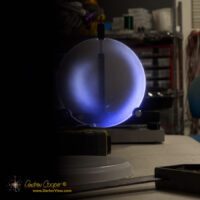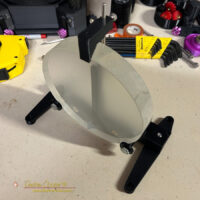As I have observed lately, most of the small telescope mirrors available right now are out of China, most of those produced by one company, Guan Sheng Optical or GSO. If you want a small mirror, say a 6″ or 8″ mirror, there is not a lot of choice, the mirror makers in the US generally do not do anything smaller than 10″.
The GSO mirrors range from decent to pretty bad, with no way of knowing what you will get when you order, just luck of the draw.
But how do you tell?
That is where testing comes in. Fortunately it is not difficult for an amateur telescope maker to set up and test a mirror. With a relatively simple workshop setup it is possible to get a good idea of the quality of a telescope mirror.
There are two tests readily available to the amateur, you can use either a Ronchi Grating Test, or a Foucault Test. Both tests have advantages and many ATM’s use both as the setup is similar.
I am set up to do a Foucault Test having built a couple test setups over the decades. The test fixture usually sits high atop a workshop shelf for the very occasional use. But is is nice to have, and quite nice to know just how good or bad a telescope mirror is.
I did add a bit to the setup this year… I designed and 3D printed a stand to hold the mirror safely. If you want the design I have posted it to the Cults 3D archive. Just download the files and print.
While shopping for a mirror I got lucky… I found a surplus Edmunds Optical 6″ f/4, just what I was looking for. As a professional supply house Edmunds has good quality products. The only problem with this mirror is that it is uncoated, I will need to send it off for an aluminum coating.
So this mirror? It looks pretty good . A nearly textbook perfect mirror appeared when I finally got the Foucault knife edge positioned perfectly. The test also allows measurement of the focal length. This came out at 606mm, just a few millimeters off the specified f/4 focal length.




They could have raffled tickets to do a knife edge on Hubble before it launched.